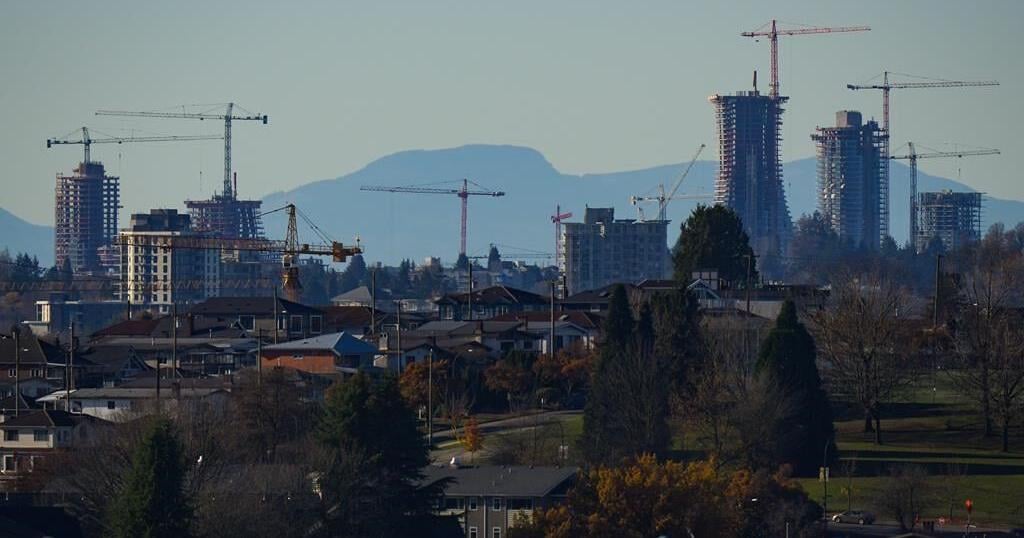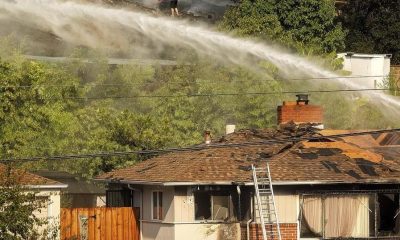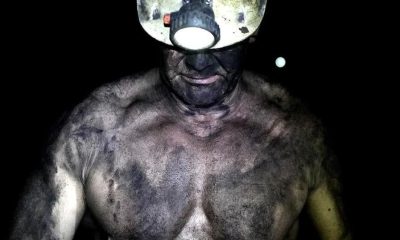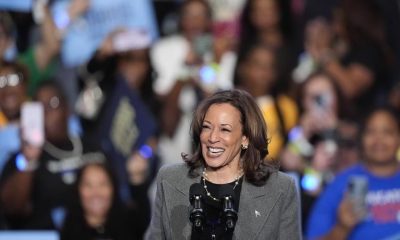Article content
Canada’s housing frenzy has made property owners a lot of money. But it’s also made the cost of market entry much higher for first-time real estate investors.
Down-payment cash doesn’t go nearly as far as it used to

Canada’s housing frenzy has made property owners a lot of money. But it’s also made the cost of market entry much higher for first-time real estate investors.
Ten years ago, a $100,000 investment would have been enough for down payments on two downtown Montreal condos. Five years ago, it would have been more than enough to put down on a single-family investment property in Hamilton or Ottawa.
But with historically low mortgage rates causing price explosions in virtually every Canadian city, $100,000 doesn’t get you as much house as it used to — in part because investors are required to put at least 20 per cent down on an investment property.
So what can investors do with $100,000 at their disposal? Here are four suggestions.
Having only $100,000 won’t get you far in Canada’s most in-demand rental markets. With the average condo in the greater Toronto area selling for just over $688,000 in August, according to Toronto Regional Real Estate Board data, a 20 per cent down payment exceeds $137,000.
But property ownership is still the chosen way to invest in real estate, says Brett Turner, Calgary-based investor and owner of Redline Real Estate Group.
“If you’re buying an income property, you’re going to get an opportunity to take advantage of four ways to make money with your investment,” he says.
Those include passive appreciation, increased equity through renovations, mortgage paydowns that increase your net worth and positive cash flow.
You don’t need to own property in a 24-hour city to generate solid returns. It’s all about balancing the cost of your property with the rent it generates, its realistic potential to command higher rents in the future and the costs associated with having it managed for you by a local expert.
A $100,000 down payment should be enough to get you into an income-generating property in Calgary, Saskatoon, Regina, Winnipeg, Fredericton or Charlottetown. And there are plenty of other affordable cities in Canada that are bursting with students, and health-care and government workers who aren’t yet ready to buy their own homes.
Turner’s advice: Try to buy at a price below the local average and keep your first go-round as a landlord simple.
“You don’t want to purchase a property that is going to require you as an investor to solve a lot of problems,” he says. “The newer a property you can buy, where you shouldn’t have to steer a large renovation — that kind of thing is a great approach.”
Maybe you want to profit off both the long- and short-term potential of real estate but don’t want the hassle of being a landlord. You can channel some, or all, of your $100,000 into real estate investment trusts (REITs) instead.
“I think they’re very useful for income-oriented investors, especially in this environment, where interest rates are low and dividend rates are stable,” says Ethan Astaneh, financial advisor at Nicola Wealth in Vancouver.
Canada’s shortage of properties to buy will continue to put pressure on the residential rental market — and rents themselves — which is music to the REIT investor’s ear.
But a diversified REIT play will also require you to get some exposure to non-residential asset classes like industrial and office properties. Dabbling in these areas can be daunting for new REIT investors.
“Individuals who have professional advice will be getting recommendations,” Astaneh says. “Individuals who don’t will have to piece it together themselves.”
When choosing a REIT, he says it’s critical to understand each asset class’s current place in the market and investigate which REITs have performed well over the long term. Plus, you need to investigate the leadership team.
“So much of a REIT’s productivity actually relies on the skill of the management team,” says Astaneh. “That’s really what you’re buying.”
Similar to REITs are offerings called “private pools.” They let investors put their funds together as part of a limited partnership that owns property directly.
As an investor, you and the other owners are in charge of the property, but management responsibilities are farmed out.
As with REITs, Astaneh says, the liquidity level of a private pool is higher than with owning actual property; although he adds some pools require six-months’ notice if an investor decides to pull out.
But, whereas REIT shares can be purchased for a few hundred dollars, the cost to access a private pool can be steep. Your $100,000 may not be enough.
Another way to generate solid returns with $100,000 is by lending it to other real estate investors.
There’s no shortage of house flippers needing funds for six-month reno projects, homeowners looking to secure second or third mortgages or novice developers assembling capital for larger-scale land deals.
Putting these loans together will require help. Mark Yamada, president and CEO of PUR Investing in Toronto, says a good real estate lawyer is a must, not only for protecting you as a lender but because they can expose you to a large network of clients who could become future borrowers.
A mortgage broker who specializes in private money and has experience with these loans can also be an invaluable information source, although you might have to cut them in on the returns.
“You can charge double-digit, short-term loan rates,” Yamada says. “If somebody had $100,000 and wanted to get participation in the market, that’s certainly one way to do it.”
This article provides information only and should not be construed as advice. It is provided without warranty of any kind.

Housing affordability is a key issue in the provincial election campaign in British Columbia, particularly in major centres.
Here are some statistics about housing in B.C. from the Canada Mortgage and Housing Corporation’s 2024 Rental Market Report, issued in January, and the B.C. Real Estate Association’s August 2024 report.
Average residential home price in B.C.: $938,500
Average price in greater Vancouver (2024 year to date): $1,304,438
Average price in greater Victoria (2024 year to date): $979,103
Average price in the Okanagan (2024 year to date): $748,015
Average two-bedroom purpose-built rental in Vancouver: $2,181
Average two-bedroom purpose-built rental in Victoria: $1,839
Average two-bedroom purpose-built rental in Canada: $1,359
Rental vacancy rate in Vancouver: 0.9 per cent
How much more do new renters in Vancouver pay compared with renters who have occupied their home for at least a year: 27 per cent
This report by The Canadian Press was first published Oct. 17, 2024.
The Canadian Press. All rights reserved.

VANCOUVER – Voters along the south coast of British Columbia who have not cast their ballots yet will have to contend with heavy rain and high winds from an incoming atmospheric river weather system on election day.
Environment Canada says the weather system will bring prolonged heavy rain to Metro Vancouver, the Sunshine Coast, Fraser Valley, Howe Sound, Whistler and Vancouver Island starting Friday.
The agency says strong winds with gusts up to 80 kilometres an hour will also develop on Saturday — the day thousands are expected to go to the polls across B.C. — in parts of Vancouver Island and Metro Vancouver.
Wednesday was the last day for advance voting, which started on Oct. 10.
More than 180,000 voters cast their votes Wednesday — the most ever on an advance voting day in B.C., beating the record set just days earlier on Oct. 10 of more than 170,000 votes.
Environment Canada says voters in the area of the atmospheric river can expect around 70 millimetres of precipitation generally and up to 100 millimetres along the coastal mountains, while parts of Vancouver Island could see as much as 200 millimetres of rainfall for the weekend.
An atmospheric river system in November 2021 created severe flooding and landslides that at one point severed most rail links between Vancouver’s port and the rest of Canada while inundating communities in the Fraser Valley and B.C. Interior.
This report by The Canadian Press was first published Oct. 17, 2024.
The Canadian Press. All rights reserved.

British Columbia voters face no shortage of policies when it comes to tackling the province’s housing woes in the run-up to Saturday’s election, with a clear choice for the next government’s approach.
David Eby’s New Democrats say the housing market on its own will not deliver the homes people need, while B.C. Conservative Leader John Rustad saysgovernment is part of the problem and B.C. needs to “unleash” the potential of the private sector.
But Andy Yan, director of the City Program at Simon Fraser University, said the “punchline” was that neither would have a hand in regulating interest rates, the “giant X-factor” in housing affordability.
“The one policy that controls it all just happens to be a policy that the province, whoever wins, has absolutely no control over,” said Yan, who made a name for himself scrutinizing B.C.’s chronic affordability problems.
Some metrics have shown those problems easing, with Eby pointing to what he said was a seven per cent drop in rent prices in Vancouver.
But Statistics Canada says 2021 census data shows that 25.5 per cent of B.C. households were paying at least 30 per cent of their income on shelter costs, the worst for any province or territory.
Yan said government had “access to a few levers” aimed at boosting housing affordability, and Eby has been pulling several.
Yet a host of other factors are at play, rates in particular, Yan said.
“This is what makes housing so frustrating, right? It takes time. It takes decades through which solutions and policies play out,” Yan said.
Rustad, meanwhile, is running on a “deregulation” platform.
He has pledged to scrap key NDP housing initiatives, including the speculation and vacancy tax, restrictions on short-term rentals,and legislation aimed at boosting small-scale density in single-family neighbourhoods.
Green Leader Sonia Furstenau, meanwhile, says “commodification” of housing by large investors is a major factor driving up costs, and her party would prioritize people most vulnerable in the housing market.
Yan said it was too soon to fully assess the impact of the NDP government’s housing measures, but there was a risk housing challenges could get worse if certain safeguards were removed, such as policies that preserve existing rental homes.
If interest rates were to drop, spurring a surge of redevelopment, Yan said the new homes with higher rents could wipe the older, cheaper units off the map.
“There is this element of change and redevelopment that needs to occur as a city grows, yet the loss of that stock is part of really, the ongoing challenges,” Yan said.
Given the external forces buffeting the housing market, Yan said the question before voters this month was more about “narrative” than numbers.
“Who do you believe will deliver a better tomorrow?”
Yan said the market has limits, and governments play an important role in providing safeguards for those most vulnerable.
The market “won’t by itself deal with their housing needs,” Yan said, especially given what he described as B.C.’s “30-year deficit of non-market housing.”
IS HOUSING THE ‘GOVERNMENT’S JOB’?
Craig Jones, associate director of the Housing Research Collaborative at the University of British Columbia, echoed Yan, saying people are in “housing distress” and in urgent need of help in the form of social or non-market housing.
“The amount of housing that it’s going to take through straight-up supply to arrive at affordability, it’s more than the system can actually produce,” he said.
Among the three leaders, Yan said it was Furstenau who had focused on the role of the “financialization” of housing, or large investors using housing for profit.
“It really squeezes renters,” he said of the trend. “It captures those units that would ordinarily become affordable and moves (them) into an investment product.”
The Greens’ platform includes a pledge to advocate for federal legislation banning the sale of residential units toreal estate investment trusts, known as REITs.
The party has also proposed a two per cent tax on homes valued at $3 million or higher, while committing $1.5 billion to build 26,000 non-market units each year.
Eby’s NDP government has enacted a suite of policies aimed at speeding up the development and availability of middle-income housing and affordable rentals.
They include the Rental Protection Fund, which Jones described as a “cutting-edge” policy. The $500-million fund enables non-profit organizations to purchase and manage existing rental buildings with the goal of preserving their affordability.
Another flagship NDP housing initiative, dubbed BC Builds, uses $2 billion in government financingto offer low-interest loans for the development of rental buildings on low-cost, underutilized land. Under the program, operators must offer at least 20 per cent of their units at 20 per cent below the market value.
Ravi Kahlon, the NDP candidate for Delta North who serves as Eby’s housing minister,said BC Builds was designed to navigate “huge headwinds” in housing development, including high interest rates, global inflation and the cost of land.
Boosting supply is one piece of the larger housing puzzle, Kahlon said in an interview before the start of the election campaign.
“We also need governments to invest and … come up with innovative programs to be able to get more affordability than the market can deliver,” he said.
The NDP is also pledging to help more middle-class, first-time buyers into the housing market with a plan to finance 40 per cent of the price on certain projects, with the money repayable as a loan and carrying an interest rate of 1.5 per cent. The government’s contribution would have to be repaid upon resale, plus 40 per cent of any increase in value.
The Canadian Press reached out several times requesting a housing-focused interview with Rustad or another Conservative representative, but received no followup.
At a press conference officially launching the Conservatives’ campaign, Rustad said Eby “seems to think that (housing) is government’s job.”
A key element of the Conservatives’ housing plans is a provincial tax exemption dubbed the “Rustad Rebate.” It would start in 2026 with residents able to deduct up to $1,500 per month for rent and mortgage costs, increasing to $3,000 in 2029.
Rustad also wants Ottawa to reintroduce a 1970s federal program that offered tax incentives to spur multi-unit residential building construction.
“It’s critical to bring that back and get the rental stock that we need built,” Rustad said of the so-called MURB program during the recent televised leaders’ debate.
Rustad also wants to axe B.C.’s speculation and vacancy tax, which Eby says has added 20,000 units to the long-term rental market, and repeal rules restricting short-term rentals on platforms such as Airbnb and Vrbo to an operator’s principal residence or one secondary suite.
“(First) of all it was foreigners, and then it was speculators, and then it was vacant properties, and then it was Airbnbs, instead of pointing at the real problem, which is government, and government is getting in the way,” Rustad said during the televised leaders’ debate.
Rustad has also promised to speed up approvals for rezoning and development applications, and to step in if a city fails to meet the six-month target.
Eby’s approach to clearing zoning and regulatory hurdles includes legislation passed last fall that requires municipalities with more than 5,000 residents to allow small-scale, multi-unit housing on lots previously zoned for single family homes.
The New Democrats have also recently announced a series of free, standardized building designs and a plan to fast-track prefabricated homes in the province.
A statement from B.C.’s Housing Ministry said more than 90 per cent of 188 local governments had adopted the New Democrats’ small-scale, multi-unit housing legislation as of last month, while 21 had received extensions allowing more time.
Rustad has pledged to repeal that law too, describing Eby’s approach as “authoritarian.”
The Greens are meanwhile pledging to spend $650 million in annual infrastructure funding for communities, increase subsidies for elderly renters, and bring in vacancy control measures to prevent landlords from drastically raising rents for new tenants.
Yan likened the Oct. 19 election to a “referendum about the course that David Eby has set” for housing, with Rustad “offering a completely different direction.”
Regardless of which party and leader emerges victorious, Yan said B.C.’s next government will be working against the clock, as well as cost pressures.
Yan said failing to deliver affordable homes for everyone, particularly people living on B.C. streets and young, working families, came at a cost to the whole province.
“It diminishes us as a society, but then also as an economy.”
This report by The Canadian Press was first published Oct. 17, 2024.


Calmer weather helps contain Oakland, California, fire that forced evacuations


Israel says it will target Hezbollah’s financial arm and begins striking Beirut


BC NDP, Conservatives in tight fight to the finish, with no clear winner in B.C. election |


In one portrait, an AP Photographer tells the story of how difficult the job of a miner is


Georgia authorities investigating a dock gangway collapse that killed 7 on a historic island


Harris tells Black churchgoers that people must show compassion and respect in their lives


Man shot and killed in Markham, Ont., driveway; police say attack was targeted


Trump boosts a hard-right Christian worldview that paints the election as ‘spiritual warfare’